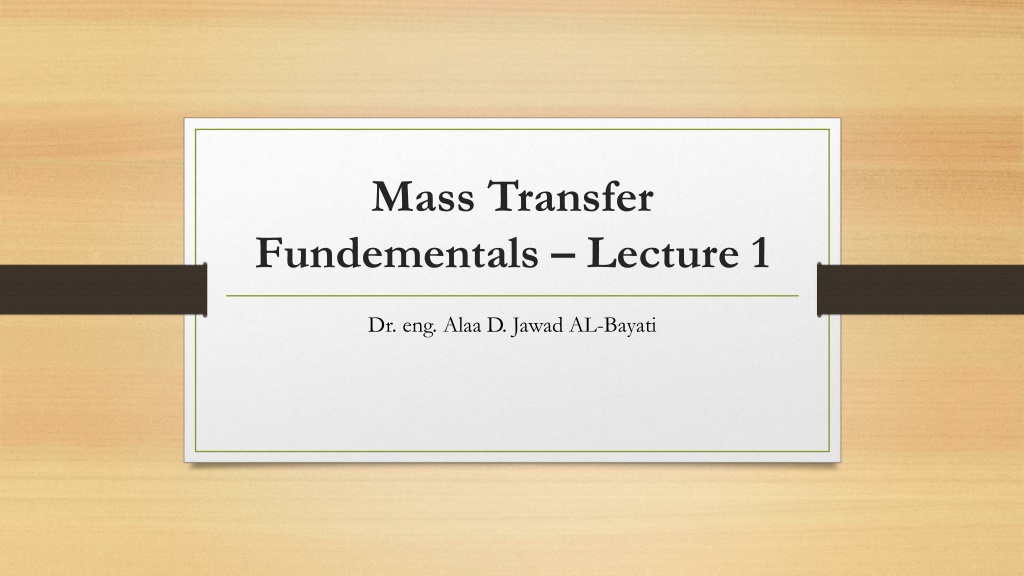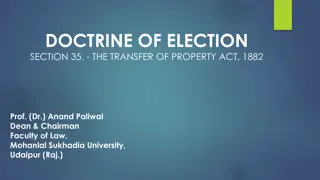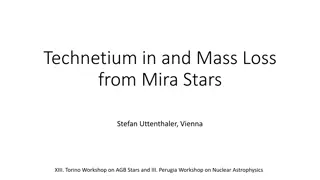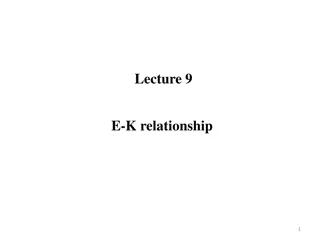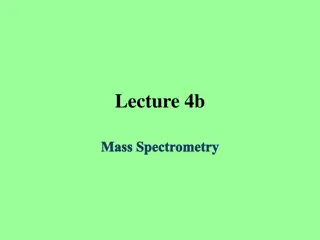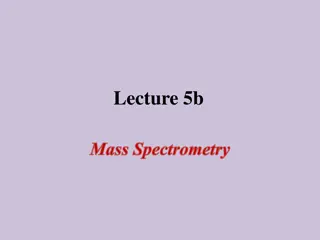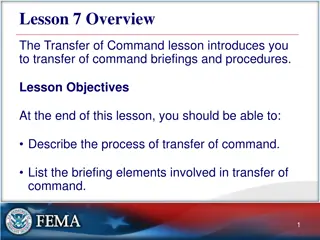Fundamentals of Mass Transfer: Lecture Highlights with Dr. Alaa D. Jawad AL-Bayati
This content covers the basics of mass transfer, including the definition, types, properties used for mass transfer, mass transfer rate, Fick's law, and factors influencing transfer rate in chemical reactions. Dr. Alaa D. Jawad AL-Bayati provides insights into the mechanisms and processes involved in mass transfer phenomena.
Download Presentation

Please find below an Image/Link to download the presentation.
The content on the website is provided AS IS for your information and personal use only. It may not be sold, licensed, or shared on other websites without obtaining consent from the author. Download presentation by click this link. If you encounter any issues during the download, it is possible that the publisher has removed the file from their server.
E N D
Presentation Transcript
Mass Transfer Fundementals Lecture 1 Dr. eng. Alaa D. Jawad AL-Bayati
Definition of Mass Transfer Q2. Define Mass Transfer? The transference of a component in a mixture from a region where its concentration is high to a region where the concentration is lower. Q2. Where do Mass transfer can occur? Ans. Mass transfer process can take place in a gas or vapour or in a liquid. Q3. What are the types of mass transfer? Ans. it can result from the random velocities of the molecules (molecular diffusion) or from the circulating or eddy currents present in a turbulent fluid (eddy diffusion).
Properties difference used for Mass Transfer fractional distillation depends on differences in volatility, gas absorption on differences in solubility of the gases in a selective absorbent and, similarly, liquid- liquid extraction is based on on the selectivity of an immiscible liquid solvent for one of the constituents.
Mass Transfer Rate The rate at which the process takes place is dependent both on: 1. the driving force (concentration difference) 2. on the mass transfer resistance
Note Where a chemical reaction takes place during the course of the mass transfer process, the overall transfer rate depends on both the chemical kinetics of the reaction and on the mass transfer resistance, and it is important to understand the relative significance of these two factors in any practical application
Ficks Law NA=-DAB dC/dy where NA is the molar flux of A (moles per unit area per unit time), CA is the concentration of A (moles of A per unit volume), DAB is known as the diffusivity or diffusion coefficient for A in B, and y is distance in the direction of transfer. An equation of exactly the same form may be written for B:
